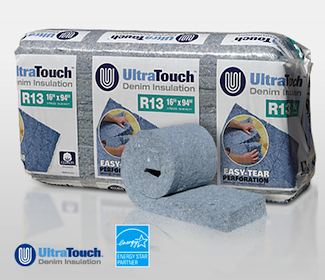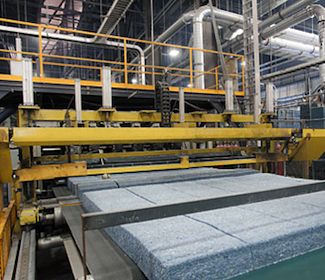Cotton Insulation

UltraTouch Cotton Insulation
Insulation is a necessity for any home, but those interested in 'greener' choices are turning to an insulation product that not only performs well, but helps to reduce the amount of waste going to landfills. That product is cotton insulation.
There are many types of insulation products on the market, and most of them do a very good job at reducing energy costs. So what makes cotton insulation an attractive choice in this crowded field?
Insulation made from cotton is a poster child for recycling and reusing materials, and is one of the most environmentally-friendly materials on the market today. Cotton insulation is almost always made from recycled cotton. Most of the cotton is post-industrial waste from the textile industry. Instead of throwing out the scraps and leftovers from clothing manufacturing, companies collect this waste and turn it into insulation.
Some companies are taking this even further, and incorporating post-consumer cotton in their products. Commonly known as "recycled blue jean insulation", it is a simple and perfect use for old, worn-out clothing that has reached the end of its life-span.
If you're building or renovating green, you should always be looking for ways to both increase the energy efficiency of your home and reduce the amount of materials and resources that go into it. Cotton insulation made from recycled materials is the perfect way to satisfy both requirements.
How Cotton Insulation is Made

UltraTouch Cotton Insulation
Cotton scraps are pulled apart into individual fibers, then treated with non-toxic flame retardants like boric acid. This naturally-soured fireproofing also works to control damage from insects, fungus, and mildew.
The fireproofed cotton is then mixed with polyolefin (a synthetic fiber) and heated. The polyolefin melts from this heating and is the glue that holds the cotton insulation together.
The end result is a batt insulation (much like fiberglass rolls) that is 85 percent cotton, 10 percent nontoxic fireproof material, and 5 percent polyolefin. Cotton insulation batts are free of formaldehyde, which is a common binder in fiberglass insulation, and toxic.
How Does Cotton Insulation Perform?
Cotton insulation is rated just like any other insulation product, and is given an R-Value . The higher the number, the higher the performance level of the insulation. Cotton batts typically has a R-Value of R-3.7 per inch. For common thickness used in home framing, this translates to R-13. Thicker options are available that can have R-Values of up to R-21.
Cotton Insulation is User-Friendly
Traditional fiberglass or mineral rockwool insulation can be difficult to work with. Fiberglass will irritate the skin in handled improperly, and airborne fibers from fiberglass or rockwool during installation can pose a health risk if inhaled.
Cotton, on the other hand, has no such dangers. Cotton insulation is made from old clothes or textile scraps, and is soft and non-irritating to the touch. Cotton insulation comes in soft batts that fit snugly into the framing of a home's walls or ceilings with no special installation or safety equipment required. You just cut it to size, and put it in place. It's a perfect solution for a do-it-yourself home insulation project.
ther forms of insulation either require special safety equipment (gloves, face masks, etc.) or must be installed with blowers that can require a great deal of work and expertise, and is usually installed by a professional.
Cotton Insulation and Your Green Home
Since cotton insulation contains up to 85% recycled cotton product, it's the ideal sustainable building material. If you are working to certify your green home, cotton insulation will help you attain that goal. For example, recycled cotton insulation earns points in 8 different LEED categories and prerequisites:
- Minimum energy performance
- Optimizes energy performance
- Recycled content
- Local/Regional Materials
- Rapidly renewable resources
- Minimum air-quality performance
- Low emission materials
- LEED innovation credit


























































































































































































